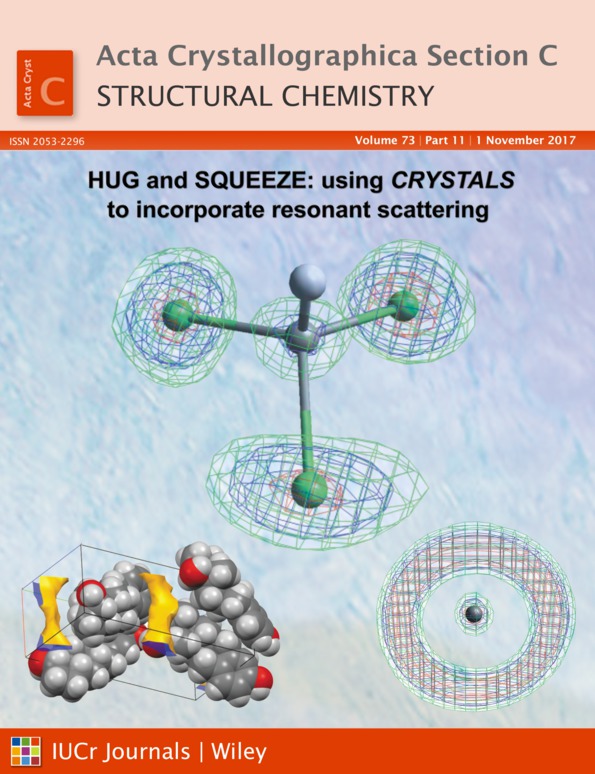Mono- and dinuclear CuII complexes of the benzyldipicolylamine (BDPA) ligand: crystal structure, synthesis and characterization
Abstract
The crystal structures of mono- and dinuclear CuII trifluoromethanesulfonate (triflate) complexes with benzyldipicolylamine (BDPA) are described. From equimolar amounts of Cu(triflate)2 and BDPA, a water-bound CuII mononuclear complex, aqua(benzyldipicolylamine-κ3N,N′,N′′)bis(trifluoromethanesulfonato-κO)copper(II) tetrahydrofuran monosolvate, [Cu(CF3SO3)2(C19H19N3)(H2O)]·C4H8O, (I), and a triflate-bridged CuII dinuclear complex, bis(μ-trifluoromethanesulfonato-κ2O:O′)bis[(benzyldipicolylamine-κ3N,N′,N′′)(trifluoromethanesulfonato-κO)copper(II)], [Cu2(CF3SO3)4(C19H19N3)2], were synthesized. The presence of residual moisture in the reaction medium afforded water-bound complex (I), whereas dinuclear complex (II) was synthesized from an anhydrous reaction medium. Single-crystal X-ray structure analysis reveals that the CuII centres adopt slightly distorted octahedral geometries in both complexes. The metal-bound water molecule in (I) is involved in intermolecular O—H…O hydrogen bonds with triflate ligands and tetrahydrofuran solvent molecules. In (II), weak intermolecular C—H…F(triflate) and C—H…O(triflate) hydrogen bonds stabilize the crystal lattice. Complexes (I) and (II) were also characterized fully using FT–IR and UV–Vis spectroscopy, cyclic voltammetry and elemental analysis.




